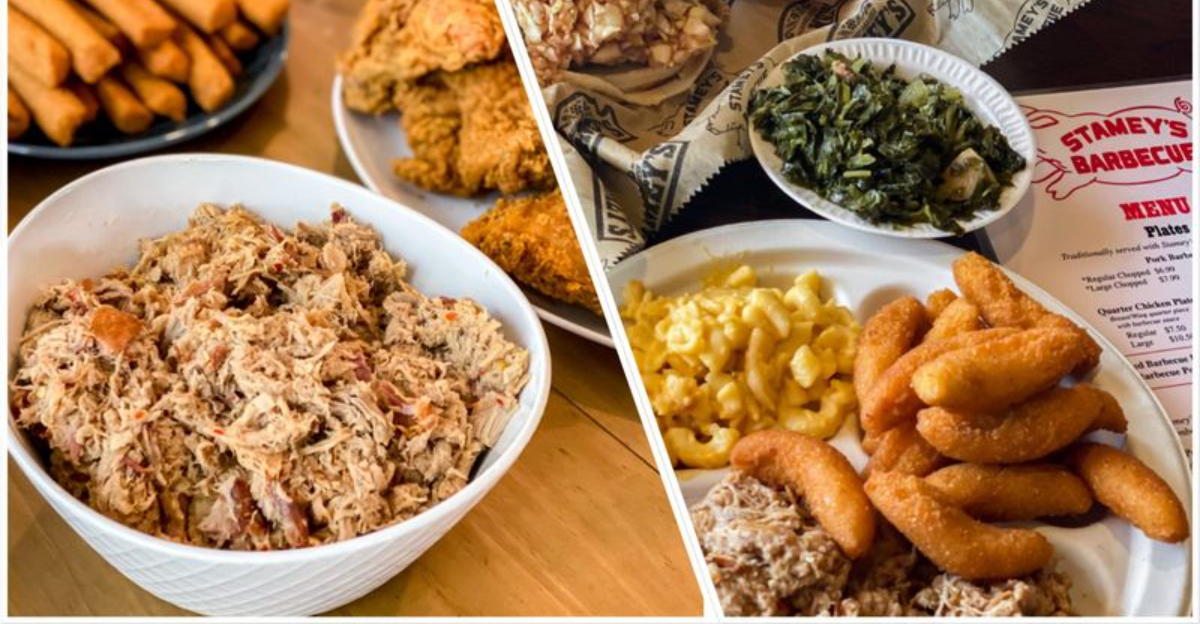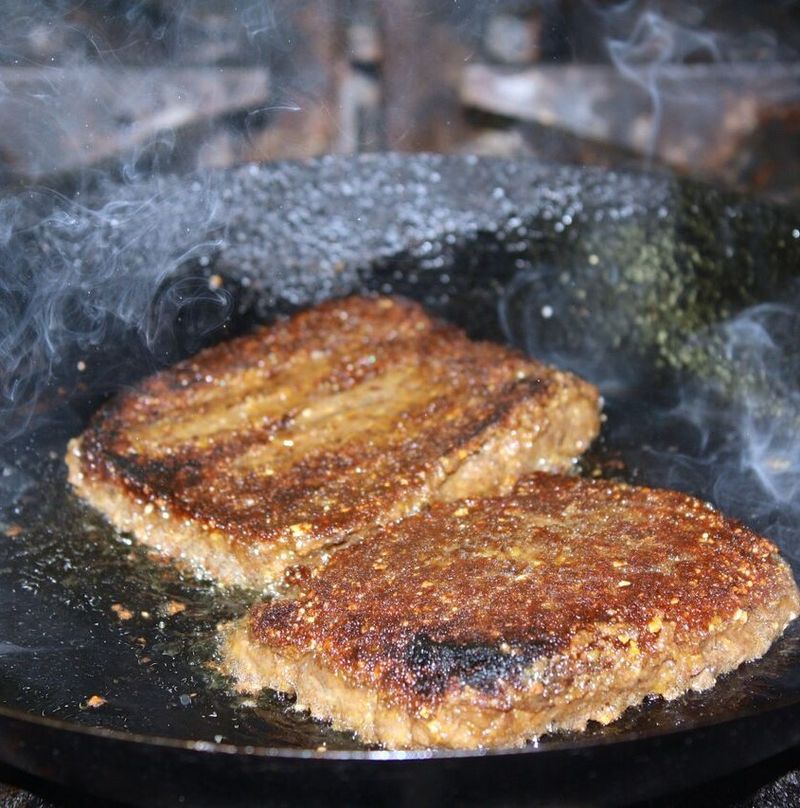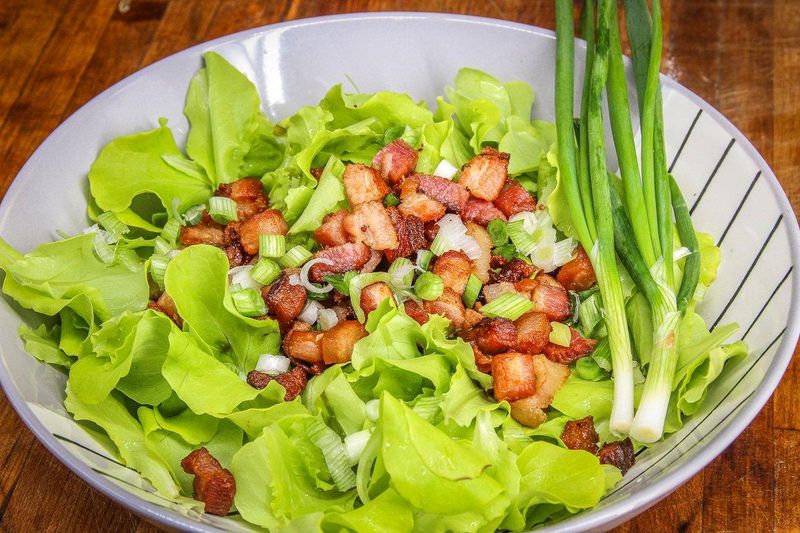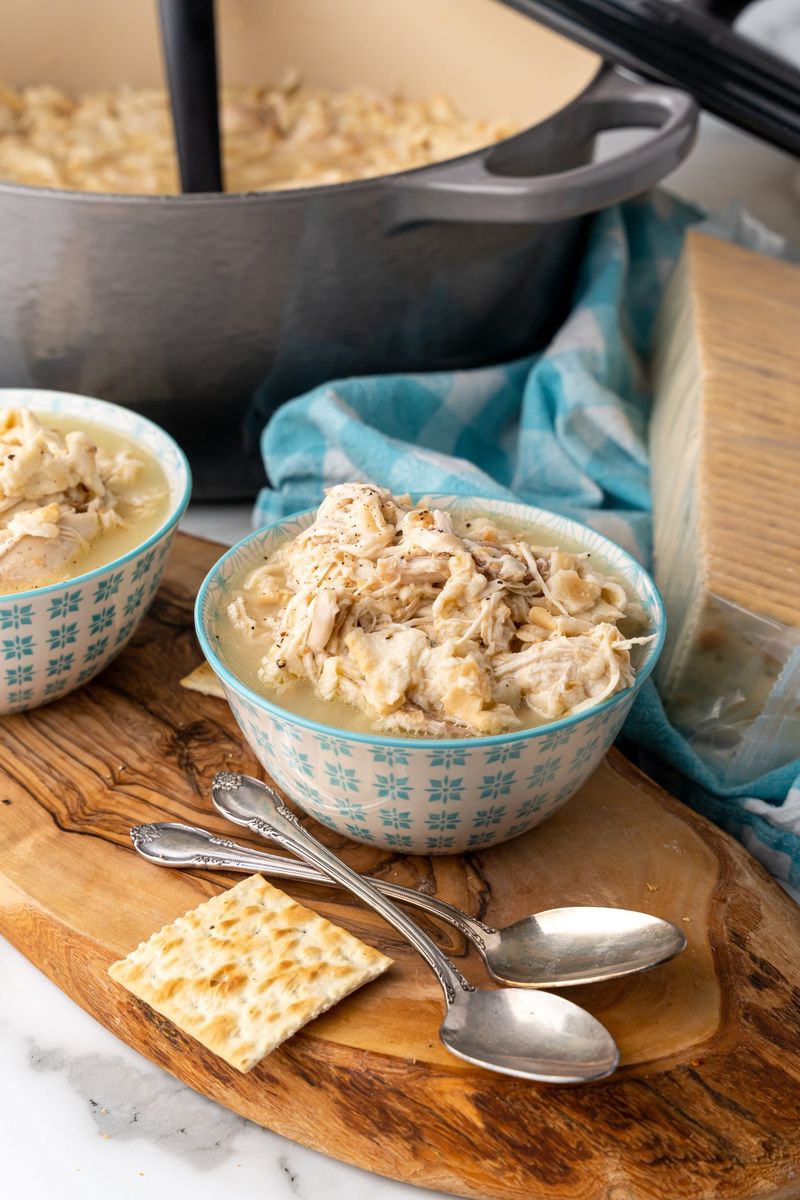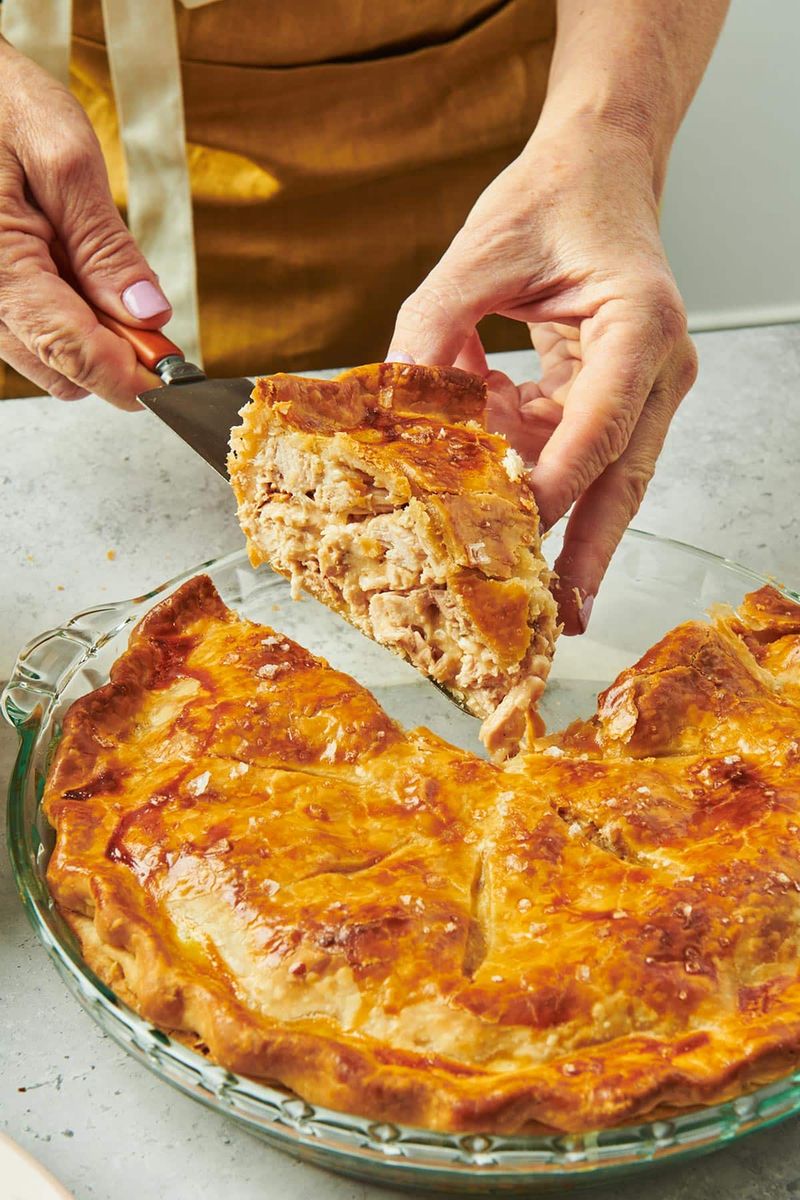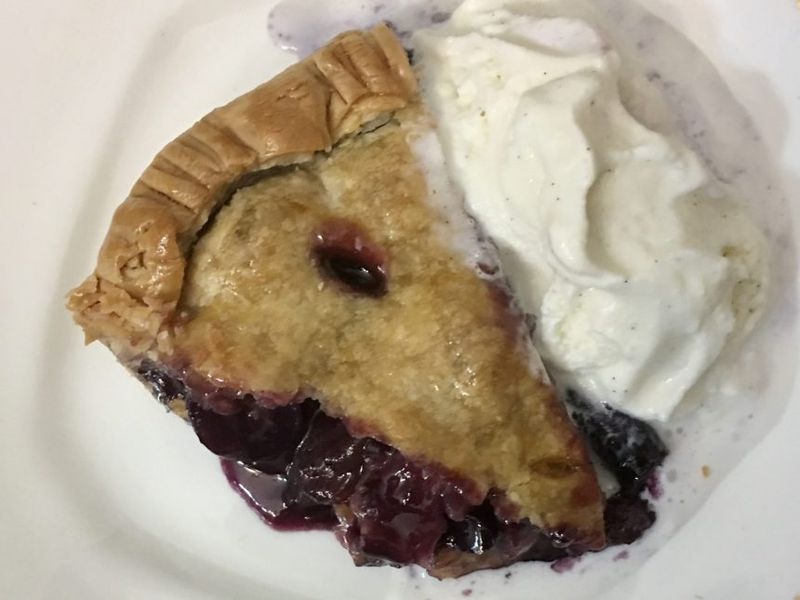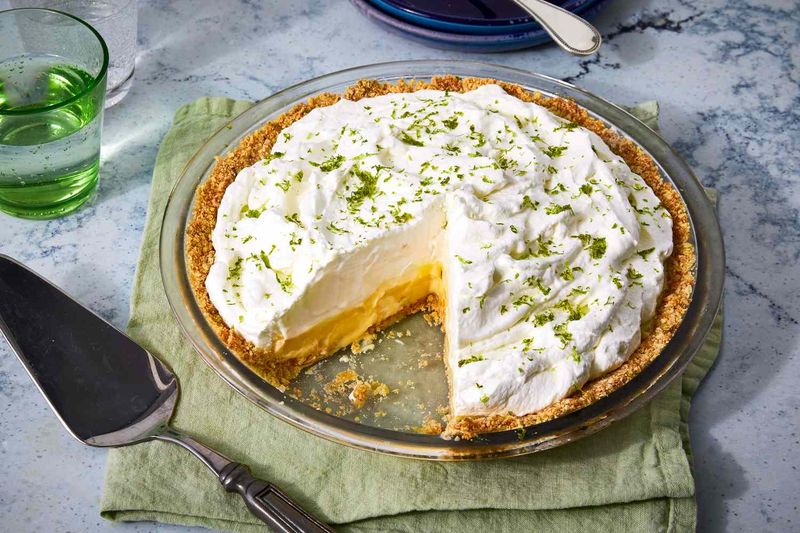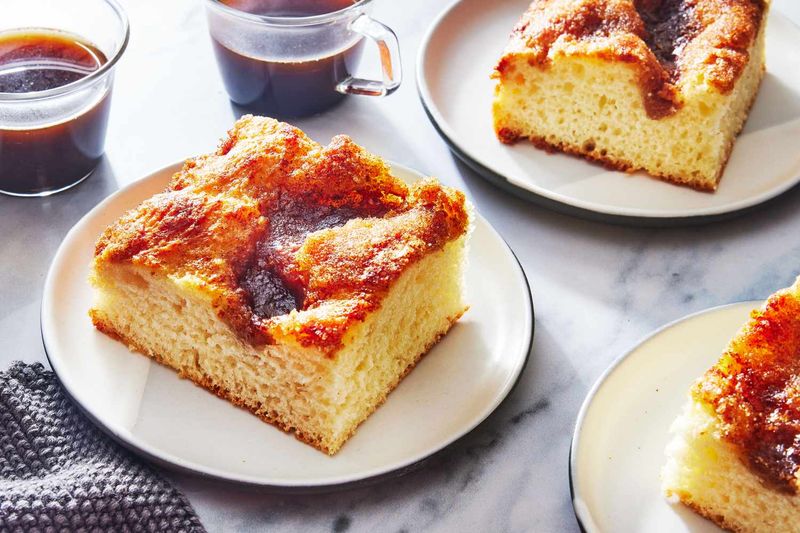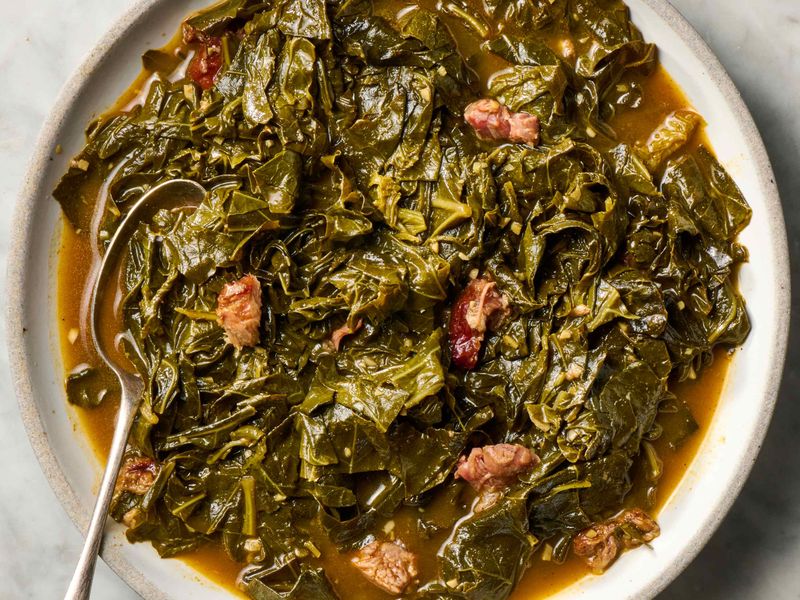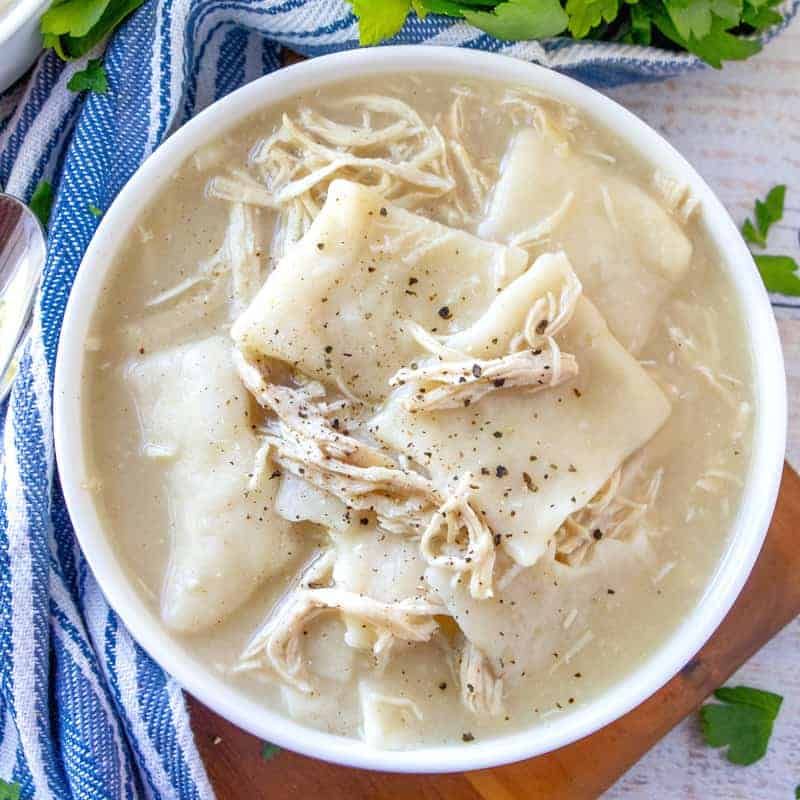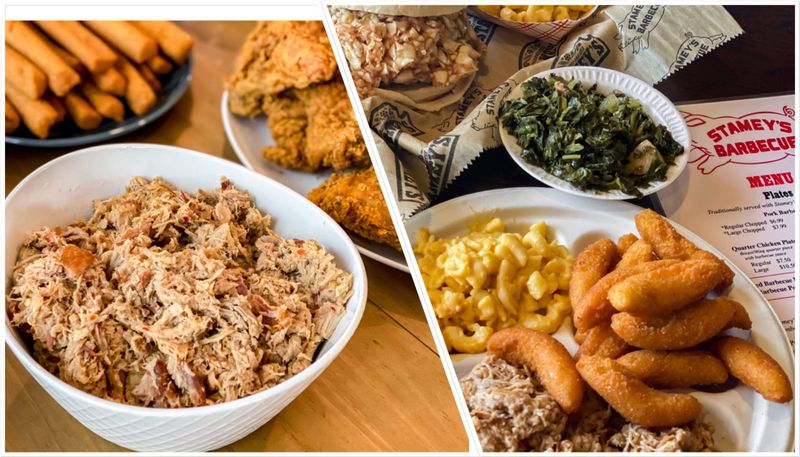North Carolina’s food scene goes way beyond barbecue and sweet tea. The Tar Heel State boasts some truly unique dishes that might raise eyebrows at first glance. From mountain traditions to coastal specialties, these foods tell stories of resourcefulness, heritage, and regional pride. Whether you’re a curious foodie or a North Carolina native, these ten classic dishes deserve a spot on your must-try list.
Livermush: The Southern Breakfast Brick
Imagine a slice of seasoned meat loaf sizzling in a cast iron skillet until the edges crisp up just right. That’s livermush – a humble mixture of pig liver, cornmeal, and bold spices pressed into a loaf that’s been feeding western North Carolinians for generations.
Folks in Shelby love it so much they hold an annual Livermush Festival celebrating this Depression-era staple. The texture surprises first-timers – crispy outside, creamy inside – making it perfect between two pieces of white bread with mustard or alongside scrambled eggs.
Mountain families traditionally made livermush to use every part of the hog during fall slaughtering, creating something delicious from necessity. Today, it remains beloved comfort food that divides visitors but unites locals in culinary pride.
Kilt Lettuce: Garden Greens with Bacon Magic
Spring gardens in Appalachian North Carolina burst with tender leaf lettuce, inspiring one of the region’s most unusual salads. Kilt lettuce (yes, “kilt” like what happened to the greens, not the Scottish garment) transforms ordinary garden greens into something extraordinary through a sizzling baptism.
Fresh-picked lettuce gets “killed” – or wilted – when hot bacon grease, vinegar, and seasonings cascade over the leaves. The greens instantly collapse, soaking up the savory dressing. Mountain families traditionally gathered wild greens like branch lettuce for this dish when spring arrived.
The contrast between the still-crisp lettuce center and the wilted, flavor-soaked edges creates a textural wonderland. Add green onions and radishes from the garden for extra zip in this surprisingly addictive seasonal treat.
Chicken Mull: Comfort in a Bowl
On chilly eastern North Carolina evenings, locals gather around steaming pots of chicken mull – a mysteriously simple concoction that outsiders might mistake for soup gone wrong. This ultra-creamy stew combines slow-simmered chicken with milk, butter, and crushed saltine crackers until it reaches a thick, hearty consistency.
Church fundraisers and community gatherings often feature huge cauldrons of mull served in styrofoam cups with extra crackers for dipping. The dish originated as a way to stretch limited chicken into a filling meal during lean times. Its velvety texture comes from the crackers dissolving into the broth.
Some families add a splash of hot sauce or vinegar-pepper sauce for kick. Franklin County still hosts mull festivals where cooks compete for bragging rights with their secret recipes handed down through generations.
Moravian Chicken Pie: Not Your Average Pot Pie
Winston-Salem’s Moravian settlers brought with them a pie philosophy that might seem downright spartan: no vegetables allowed. Their chicken pie focuses solely on tender chunks of chicken swimming in rich broth beneath a golden double crust – a deliberate choice that lets the pure chicken flavor shine.
Local church fundraisers sell thousands during the holidays, with some congregations having perfected their recipes since the 1700s. The filling contains nothing but chicken, broth, salt, and pepper, though the pie comes served with a boat of gravy for pouring over each slice.
What makes it strange to newcomers is what’s missing – no carrots, no peas, no potatoes cluttering the pure chicken experience. This minimalist approach creates a deeply satisfying comfort food that’s become a North Carolina tradition worth seeking out in Winston-Salem’s historic district.
Grape Hull Pie: Sweet-Tart Treasure from the Vineyard
North Carolina’s abundant muscadine grape harvest inspired resourceful cooks to create something magical from what others discard. Grape hull pie transforms the thick, tangy skins of these native grapes into a jewel-toned filling that balances perfectly between sweet and tart.
Harvested in late summer, muscadines have tough skins that most folks spit out while enjoying the sweet pulp. Clever Southern cooks separate the pulp for jelly, then simmer the leftover hulls with sugar and spices until they surrender their rich flavor and surprising tenderness.
The deep purple filling nestled in flaky pastry offers complex flavors reminiscent of blackberry and plum with a distinctly grape finish. Some old-timers add a splash of moonshine to the filling, though most modern recipes stick to cinnamon and nutmeg for warming spice notes in this waste-not-want-not masterpiece.
Atlantic Beach Pie: The Coastal Dessert Sensation
Salty and sweet collide in this barrier island masterpiece that breaks all the dessert rules. Atlantic Beach Pie begins with a crust made from pulverized saltine crackers – yes, the same ones you’d float in soup – held together with butter and sugar until golden and crisp.
The filling? A sunshine-yellow lemon-lime custard that strikes the perfect balance between tart and sweet. A billowy cloud of whipped cream tops it all, finished with a sprinkle of flaky sea salt that makes taste buds do a double-take.
Old-timers along the Carolina coast swore that eating dessert after seafood would make you sick – unless that dessert contained salt and citrus. This pie satisfied the craving while supposedly keeping diners safe, though modern science dismisses this as mere superstition. The unexpected combination continues delighting visitors to coastal North Carolina restaurants.
Moravian Sugar Cake: Dimpled Breakfast Delight
Waking up in Winston-Salem might mean encountering a strange-looking coffee cake studded with deep wells filled with melted butter and brown sugar. Moravian sugar cake resembles a landscape of sweet craters – each depression carefully created with fingertips before baking.
German-speaking Moravians settled in North Carolina in the 1700s, bringing this special-occasion bread that’s halfway between cake and yeasted breakfast treat. The magic happens during baking when the butter-sugar mixture bubbles and caramelizes, creating pockets of sticky sweetness throughout the tender dough.
Traditionally served at Easter and Christmas, locals now enjoy it year-round with morning coffee. The distinctive finger-poked pattern makes it immediately recognizable to North Carolinians. Old Salem bakeries still make it the traditional way, with potato added to the dough for extra tenderness that contrasts beautifully with the crunchy sugar wells.
Fatback: The Southern Cook’s Secret Weapon
Walk into any authentic North Carolina kitchen and you’ll likely spot a chunk of what looks like solid white fat in the refrigerator. Don’t be alarmed – that’s fatback, the culinary cornerstone that transforms humble vegetables into memorable meals.
This salt-cured pork fat (usually unsmoked) isn’t meant to be eaten in large quantities. Instead, a small piece gets tossed into pots of collard greens, green beans, or black-eyed peas, infusing everything with rich, savory depth. As it slowly melts, it releases porky essence that country cooks have relied on for centuries.
The resulting “pot likker” – the liquid left after cooking greens with fatback – becomes liquid gold, sopped up with cornbread or consumed as a vitamin-rich tonic. First-timers might be startled by this pure fat approach, but one taste of fatback-seasoned vegetables converts most skeptics instantly.
Chicken and Pastry: Flat Dumplings Done Right
Mention dumplings to a North Carolinian and they might correct you – “That’s chicken and pastry!” This beloved comfort food features wide, flat strips of dough rather than the puffy, dropped dumplings found elsewhere in the South.
The magic lies in the simplicity. Hand-rolled dough cut into rectangles gets dropped directly into seasoned chicken broth, where they simmer until tender but still slightly chewy. The starch from the pastry naturally thickens the broth into a silky sauce that clings to each bite.
Sunday dinner tables across eastern North Carolina regularly feature this dish served in shallow bowls with plenty of black pepper. Some families add a splash of yellow food coloring to the dough – a quirky tradition dating back to when home chickens produced more golden broths than today’s store-bought birds. The flat pastry approach creates a texture that holds up beautifully against the tender chicken.
North Carolina Barbecue: A Tale of Two Sauces
North Carolina’s barbecue battle lines are drawn along geographic boundaries, creating two distinct styles that might shock visitors expecting thick, sweet sauces. Eastern-style practitioners insist on whole hog cooking and a sauce that’s nothing more than vinegar, crushed red pepper, and maybe a touch of salt – no tomato allowed.
Cross into the Piedmont region around Lexington, and everything changes. Western-style focuses on pork shoulders only, with a sauce that scandalizes eastern purists by adding ketchup to the vinegar base. Both camps smoke their meat slowly over hardwood coals until perfectly tender.
First-timers often experience shock at the tangy, acidic punch of true Carolina barbecue. The vinegar-forward approach cuts through fatty pork while enhancing its natural flavors in ways thick, sweet sauces can’t match. Locals judge newcomers by which style they prefer – a decision not taken lightly in barbecue country.
